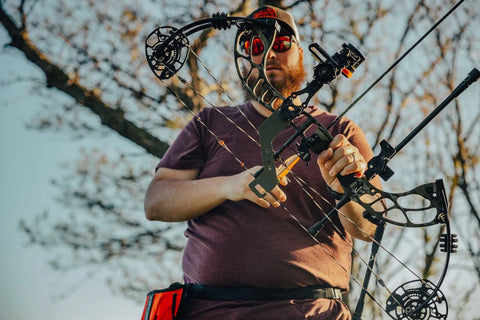Remain Steady: Checking Out the Perks of Compound Bow Stabilizers
Remain Steady: Checking Out the Perks of Compound Bow Stabilizers
Blog Article
Optimizing Your Archery Efficiency With the Right Substance Bow Stabilizer: a Detailed Review
In the world of precision, consistency and archery are paramount to attaining optimum efficiency. One often-overlooked yet critical part in boosting accuracy is the compound bow stabilizer. This simple device plays a significant duty in steadying your purpose, lowering bow torque, and soaking up vibrations. The effectiveness of a stabilizer pivots on various variables, including positioning, weight, and style. By recognizing the nuances of picking and optimizing a compound bow stabilizer, archers can tweak their devices to elevate their capturing experience to new degrees of efficiency and control.
Value of Bow Stabilizers in Archery

Furthermore, bow stabilizers aid in balancing the weight distribution of the bow, which can boost the archer's stability while intending and firing. By including weight to the front of the bow, stabilizers can decrease the quantity of torque experienced upon launch, causing a smoother and a lot more controlled shot - compound bow stabilizer. This weight distribution additionally assists in holding the bow steady for a longer period, enabling the archer to intend more accurately
Kinds of Substance Bow Stabilizers
When considering the different kinds of substance bow stabilizers available, it is necessary to recognize their distinctive features and functions to figure out one of the most ideal option for making the most of archery performance. One of the most common kinds of compound bow stabilizers include sidebar stabilizers, front stabilizers, and back stabilizers. Sidebar stabilizers connect to the sides of the riser and aid in stabilizing the bow throughout the intending procedure. Front stabilizers, also known as long rods, are connected to the front of the riser and aid in absorbing and decreasing any type of vibrations triggered by the release of the arrow, therefore improving accuracy. Back stabilizers, likewise called rear stabilizers, are mounted to the rear of the bow and help in reversing the weight of various other devices, causing boosted security and constant intending. In addition, some stabilizers come with flexible weights that allow archers to fine-tune the balance and feeling of their bows according to their choices, making them flexible alternatives for archery fanatics of all degrees.
Elements to Consider When Choosing
In reviewing compound bow stabilizers, recognizing the distinct features and features of each kind is essential for making an informed decision on the most suitable option to boost archery efficiency. When picking a stabilizer, one need to think about the weight of the stabilizer itself. By very carefully examining these variables, archers can pick a substance bow stabilizer that lines up with their shooting style and maximizes their total efficiency on the archery variety.
Setup and Adjustment Tips
For optimal efficiency and precision in archery, understanding the installment and modification of your bow stabilizer is essential. Correct installation starts with connecting the stabilizer to the bow's riser, ensuring it is securely secured.
When readjusting the stabilizer, start with little step-by-step changes rather than extreme changes. Pay interest to how the bow reacts to adjustments in stabilizer setups and make adjustments accordingly. Frequently examine the stabilizer's rigidity and total pop over to this web-site problem to ensure it continues to work efficiently.
Upkeep and Treatment Guidelines

It is additionally necessary to keep your bow with the stabilizer in a safe and safe area when not in usage. Complying with these upkeep and treatment guidelines will assist you get the most out of your bow stabilizer and improve your total archery efficiency.
Verdict
In final thought, choosing the ideal compound bow stabilizer is critical for making the most of archery efficiency. Comprehending the relevance, types, variables to think about, installment and adjustment ideas, as well as upkeep and treatment guidelines can substantially impact one's precision and uniformity in shooting. By choosing a stabilizer that matches individual requirements and choices, archers can enhance their general efficiency and achieve much better results on the array or in competitors.
Bow stabilizers play a vital duty in enhancing an archer's accuracy and uniformity by lowering vibrations and supporting the bow throughout the launch of an arrowhead - compound bow stabilizer.Additionally, bow stabilizers assist in stabilizing the weight circulation of the bow, which can boost the archer's stability while aiming and shooting. The most usual types of compound bow stabilizers include sidebar stabilizers, front stabilizers, site web and back stabilizers. Back stabilizers, likewise called back stabilizers, are installed to the back of the bow and aid in counterbalancing the weight of other accessories, resulting in improved stability and constant intending. When he has a good point choosing a stabilizer, one should think about the weight of the stabilizer itself
Report this page